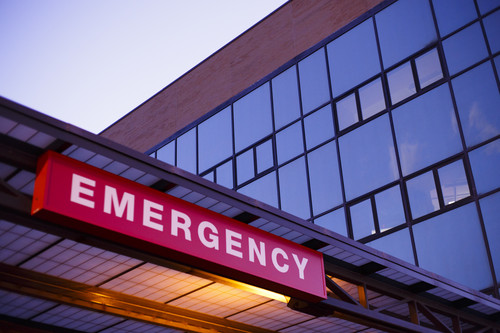The following article was originally published in ViewPoint, the official newsletter of the American Academy of Ambulatory Care Nursing. We believe it shows the importance of nurse telephone triage and wanted to share it with you. It was written by Andrea Kossoudji, MBA, BSN, RN-BC, RN Care Manager, Primary Care, Mission Valley Community Based Outpatient Clinic, VA San Diego Healthcare System, San Diego, CA. It is republished here with permission.
Did I try hard enough? Will he go to the emergency room? I was wondering if I had done my part. My thoughts were racing, and feelings of guilt were already starting to set in. Telehealth nursing is not easy; I never thought it would be. Physical assessment is out the window and telephone triage can be life or death. While the COVID-19 pandemic has added a precarious component to effective triage, ambulatory care nurses have worked diligently to keep chronically ill, high-risk patients out of the hospital and medically managed in the comfort of their own home. Not only have medical providers been advocating for patients to stay home, but many patients themselves have preferred receiving care through telehealth modalities during this unprecedented time. These preferences, likely rooted in fears of being exposed to the virus, have caused patient ambivalence about accepting recommendations regarding their disposition.
I had just returned from lunch and had a message from a patient requesting an ultrasound. I had previously completed a discharge call-back for this patient just 2 days prior. He was status post coronary stent placement through the right femoral artery 7 days ago. Upon calling the patient back, he explained he had just left the cardiologist office for a follow-up due to leg pain. Am I really going to be conducting telephone triage within minutes of this patient seeing a cardiologist in a face-to-face visit? This seemed redundant at first. What would I be able to assess over the phone that the doctor didn’t already know or physically assess? Upon further questioning and triage, the patient was complaining of severe leg pain, leg swelling, and shortness of breath.
“The patient had just left the cardiologist office. This can’t be right!” I thought. I wondered, what had the cardiologist recommended?
“Oh, he just wants me to get an ultrasound to rule out a pseudoaneurysm,” the patient replied.
“And what about the shortness of breath?” I asked.
“Oh, that’s because of the medication I’m on. He switched it. He told me I would get better.”
The patient was confident this was not a medical emergency. My clinical reasoning and nursing judgement were telling me otherwise. After information gathering and cognitive processing, I dispositioned the patient to immediately report to the emergency room for further evaluation. The patient responded, “But you’re just a nurse. What do you know?”
The patient was clearly frustrated, detailing how he had just been evaluated by a doctor – a cardiologist. “He’s a doctor! Why didn’t he tell me to go to the ER?” he prompted.
I further explained my concerns about his leg swelling, pain and obvious shortness of breath during the conversation.
“Why would I go there? With all this COVID stuff going on? I’m not going. I was just discharged from the hospital on Monday. I’m not going!”
I voiced my concern, and that delaying care could potentially result in death. I’m not sure if he was really listening. COVID-19 is all he was thinking.
“I’m at risk for that you know!” he shouted.
I spent over 10 minutes trying to convince him that going to the emergency room was the best option. He eventually agreed, but was he just pacifying me? Perhaps he was tired of listening and just wanted to get off the phone. Did I try hard enough?
The following morning, I received notification that the patient was pending admission for bilateral pulmonary emboli. What a relief. I contacted the patient post-discharge to conduct a telephone follow-up. He started the conversation, “I can’t believe it. You knew something was wrong. I am forever grateful you called.”
COVID-19 has certainly changed the environment in which we operate. This is true not only from an assessment standpoint, but it has also increased the burden in which telehealth nurses must convince a patient to seek care when necessary. Being a patient advocate and asking just a few additional questions may be the difference between life and death, no matter where the patient encounter takes place – in the emergency room, the ICU, in primary care or, yes, even on the phone.
This article was originally published in ViewPoint, (2020), Volume 42, Number 6, pp. 1, 12. Reposted here with permission of the American Academy of Ambulatory Care Nursing, East Holly Avenue, Box 56, Pitman, NJ 08071-0056.
ClearTriage is a proud corporate sponsor of the American Academy of Ambulatory Care Nursing (AAACN). With its focus on excellence in ambulatory care nursing, AAACN is the nursing association that has the greatest emphasis on nurse telephone triage. Membership as a nurse provides access to their regular newsletters, active community discussion boards, and discounts on their outstanding annual conference. Learn more at www.aaacn.org.

